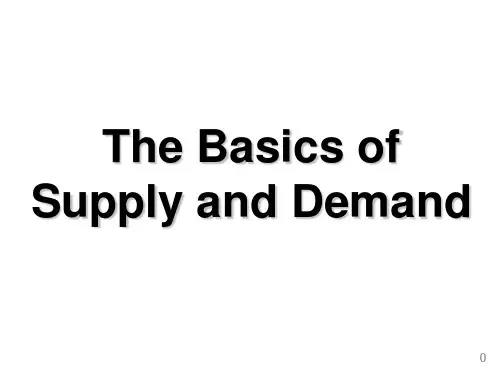上财中级微观经济学Micch.ppt
- 格式:ppt
- 大小:434.51 KB
- 文档页数:24
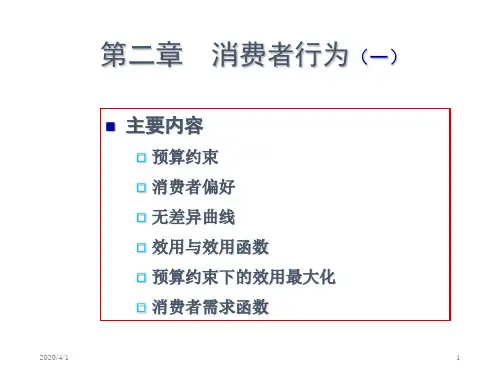
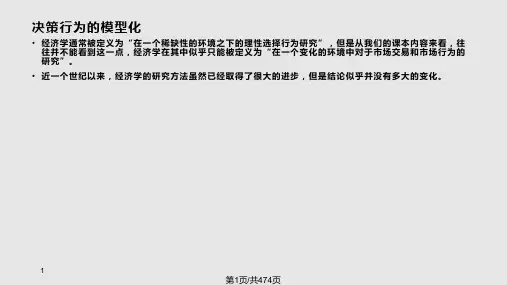
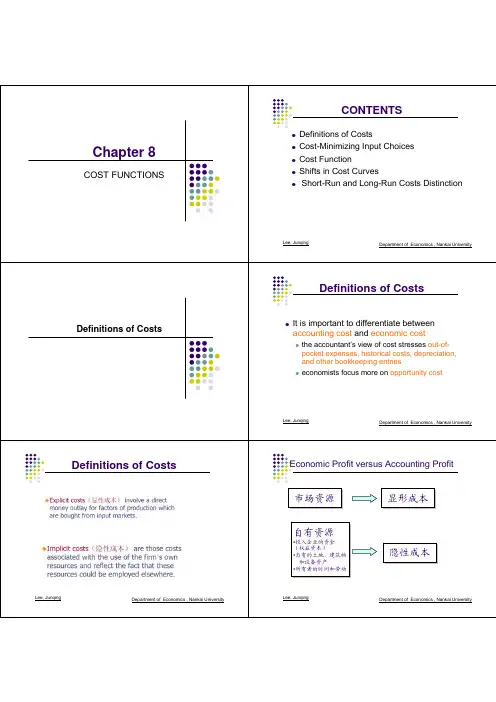


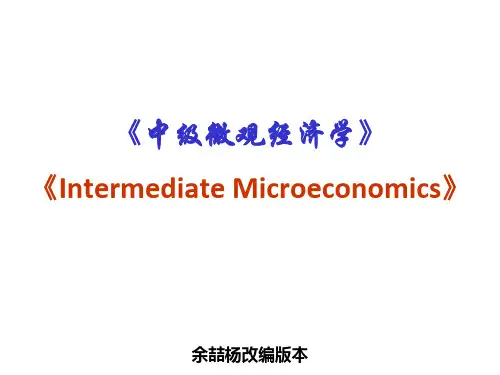
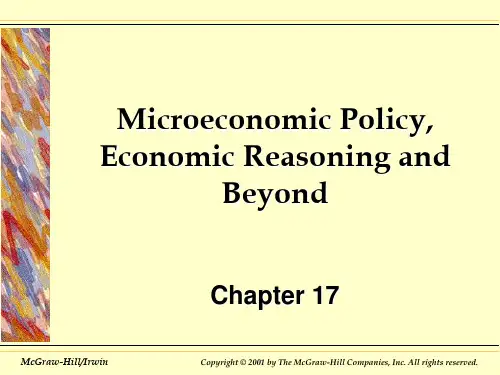


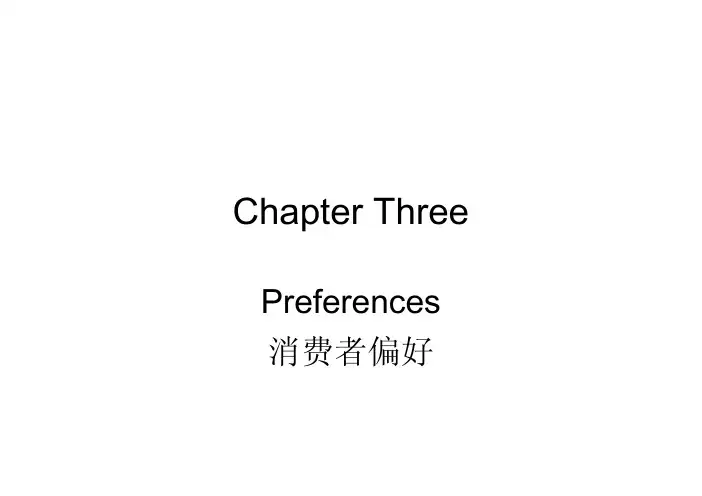
Chapter ThreePreferences消费者偏好Where Are We in the Course?•We are studying the 1st of the three blocks of microeconomics: Consumer behavior, production theory, and market equilibrium •Within the 1st block, we are working on the 2nd of the three components: choice set, preference, and consumer demandWhat Do We Mean byPreference? (偏好)•It refers to the ordered relationship among alternative choices given by an economic agent.•In most economic literature, consumer preference is treated as the ultimate exogenous element.Preference Relations •Comparing two different consumption bundles, x and y:–strict preference: x is more preferred than is y.–weak preference: x is as at least as preferredas is y.–Indifference: x is exactly as preferred as is y.Notations•denotes strict preference; ∼ denotes indifference; •denotes weak preference;≺~Preference Relations•x y and y x imply x∼y.•x y and (not y x) imply x y.~ ~ ~ ~ ≺Relations•Completeness: For any two bundles x and y it is always possible to make the statement that eitherx y or y x.~~Relations •Reflexivity: Any bundle x is always at least as preferred as itself; i.e.x x.~Indifference Curves无差异曲线(或,无差异集)•Take a reference bundle x’. The set of all bundles equally preferred to x’is the indifference curve containing x’; the set of all bundles y ∼x’.•Since an indifference “curve”is not always a curve a better name might be an indifference “set”.Slopes of Indifference Curves •When more of a commodity is always preferred, the commodity is a good.•If every commodity is a good then indifference curves are negatively sloped.Slopes of Indifference Curves •If less of a commodity is always preferred then the commodity is a bad.Curves; Perfect Substitutes •If a consumer always regards units of commodities 1 and 2 as equivalent, then the commodities are perfect substitutes and only the sum of the two commodities in bundles determines their preference rank-order.Curves; Perfect Complements •If a consumer always consumes commodities 1 and 2 in fixed proportion (e.g. one-to-one), then the commodities are perfect complements and only the number of pairs of units of the two commodities determines the preference rank-order of bundles.Preferences Exhibiting Satiation •A bundle strictly preferred to any other is a satiation point or a bliss point.•What do indifference curves look like for preferences exhibiting satiation?Indifference Curves for DiscreteCommodities•A commodity is infinitely divisible if it can be acquired in any quantity; e.g.water or cheese.•A commodity is discrete if it comes in unit lumps of 1, 2, 3, …and so on; e.g.aircraft, ships and refrigerators.Indifference Curves for DiscreteCommodities(study this yourself)•Suppose commodity 2 is an infinitely divisible good (gasoline) while commodity 1 is a discrete good (aircraft). What do indifference “curves”look like?Well-Behaved Preferences •A preference relation is “well-behaved”if itis–monotonic and convex.•Monotonicity: More of any commodity is always preferred (i.e.no satiation and every commodity is a good).Well-Behaved Preferences •Convexity (凸性): Mixtures of bundles are (at least weakly) preferred to the bundles themselves. E.g., the 50-50 mixture of the bundles x and y isz = (0.5)x + (0.5)y.z is at least as preferred as x or y.Marginal Rate-of-Substitution(边际替代率)•The slope of an indifference curve is its marginal rate-of-substitution(MRS) (边际替代率)•How can a MRS be calculated?Summary:The Key Concept of this Chapter It is the indifference curve (IC)!•It consists of all the consumption bundles thatare indifferent to the consumer;•The shape of an IC tells a lot about theconsumer’s preference:---Its slope is called the marginal rate-of-substitution;---We can define convexity of a preference which correspondsto the shape of the IC.。
